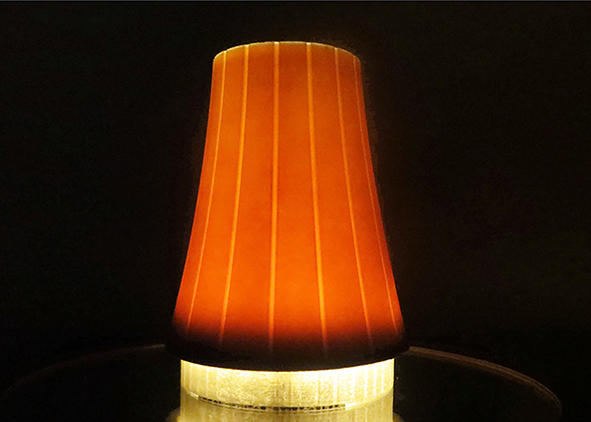RESTONED. From Waste Material to Sustainable Stone
DOI:
https://doi.org/10.19229/2464-9309/5212019Keywords:
sustainable design, product innovation, stone design, circular economy, digital manufacturingAbstract
The ReSTONED research investigates the theme of environmental sustainability related to the production cycle, starting with the reuse of the stone waste material, to be transformed into new material for indoor and outdoor products. The research is based on the product innovation field, with particular reference to materials from natural sources and furniture. With a view to strengthening the regional circular economy, the research hypothesis is that the production waste, defined as ‘processing mud’, can be re-processed in order to obtain new material with renewed characteristics both from a technical and an aesthetic point of view.
Downloads
Article Metrics Graph
References
Almeida, N., Branco, F. and Santos, R. J. (2007), “Recycling of stone slurry in industrial activities: Application to concrete mixtures”, in Building and Environment, vol. 42, pp. 810-819.
Andrews, D. (2015), “The circular economy, design thinking and education for sustainability”, in Local Economy, vol. 30, issue 3, pp. 305-315.
Badalucco, L. and Casarotto, L. (2018), “Dallo scarto al valore”, in MD Journal | Stone Design, vol. 6, pp. 130-141.
Commissione Europea (2015), Closing the loop – Commission adopts ambitious new Circular Economy Package to boost competitiveness, create jobs and generate sustainable growth, Brussels.
Commissione Europea (2015), COM 614 L’anello mancante – Piano d’azione dell’Unione europea per l’economia circolare, Brussels.
Commissione Europea (2014), COM 398 Verso un’economia circolare – Programma per un’Europa a zero rifiuti, Brussels.
Commissione Europea (2014), Where next for the European bioeconomy?, Brussels – Directorate-General for Research and Innovation.
Dal Buono, V. (2011), Pietre D’Artificio – Materiali per l’Architettura tra mimesi e invenzione, Lulu, Roma.
Follesa, S. (2013), Design & identità – Progettare per i luoghi, Franco Angeli, Firenze.
Forlani, M. C. (2010), Cultura tecnologica e progetto sostenibile, Alinea, Firenze.
Giorgi, S., Lavagna, M. and Campioli, A. (2017), “Economia circolare, gestione dei rifiuti e life cycle thinking: fondamenti, interpretazioni e analisi dello stato dell’arte”, in Ingegneria dell’ambiente, vol. 4, n. 3, pp. 263-276.
ISPRA (2016), Consumo di suolo, dinamiche territoriali e servizi ecosistemici, Edizione 2016, Rapporto 248/2016.
ICESP – Italian Circular Economy Stakeholder Platform (2018), Charter of the Italian way for circular economy. [Online] Available at: www.pvcforum.it/wp-content/uploads/2019/03/CARTA_ICESP.pdf [Accessed 8 April 2019].
Mangano, D. (2010), Archeologia del contemporaneo. Socio semiotica degli oggetti quotidiani, Edizioni Nuova Cultura, Roma.
Morgante, A. (2013), Dai sistemi produttivi tradizionali ai sistemi produttivi avanzati, Maggioli, Rimini.
Norman, D. (2004), Emotional Design, Apogeo, Milano.
Norman, D. and Draper, S. (1986), User centered system design – New Perspectives on Human-computer Interaction, Lorence Elbrown Ass., Broadway.
Pappalettere, C., Casavola, C. and Pappalettera, G. (2014), “New approaches to mechanical characterized innovative materials”, in Di Sciascio, E., Castorani, A., Nuzzo, S., Andria, G., Monno, G., Camarda, P. and D’Amato Guerrieri, C. (eds), La Ricerca nel Politecnico di Bari – Resoconto Generale 2014, vol. 1, Gangemi, Roma, pag. 245-255.
Pavan, V. (2007), Creativi frammenti – Gli scarti della pietra da problema a risorsa, Associazione culturale e Parco Regionale dell’Appia Antica, Roma.
Regione Puglia (2009), Atlante contemporaneo dei marmi e delle pietre di Puglia – Cave, materiali, architettura, Bari.
Verganti, R. (2011), Design-Driven Innovation – Cambiare le regole della competizione innovando radicalmente il significato dei prodotti e dei servizi, Rizzoli, Milano.
Vezzoli, C. (2016), Design di prodotto per la sostenibilità ambientale, Zanichelli, Bologna.

Downloads
Published
How to Cite
Issue
Section
License
This Journal is published under Creative Commons Attribution Licence 4.0 (CC-BY).
License scheme | Legal code
This License allows anyone to:
Share: copy and redistribute the material in any medium or format.
Adapt: remix, transform, and build upon the material for any purpose, even commercially.
Under the following terms
Attribution: Users must give appropriate credit, provide a link to the license, and indicate if changes were made; users may do so in any reasonable manner, but not in any way that suggests the licensor endorses them or their use.
No additional restrictions: Users may not apply legal terms or technological measures that legally restrict others from doing anything the license permits.
Notices
Users do not have to comply with the license for elements of the material in the public domain or where your use is permitted by an applicable exception or limitation.
No warranties are given. The license may not give users all of the permissions necessary for their intended use. For example, other rights such as publicity, privacy, or moral rights may limit how you use the material.


















































































